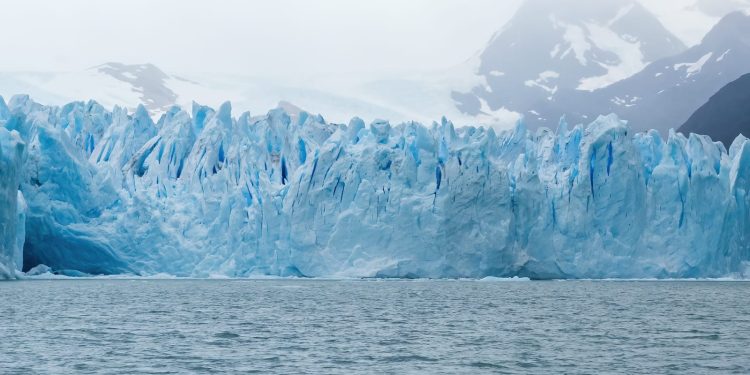In the remote expanse of Antarctica, a colossal force of nature is quietly reshaping our planet’s future. Known as the Thwaites Glacier, or more ominously, the “Doomsday Glacier,” this immense mass of ice has been the subject of intense scientific scrutiny since 2018. As researchers conclude their six-year-long International Thwaites Glacier Collaboration (ITGC), the picture they paint is deeply unsettling.
Far from a distant, frozen relic of a bygone era, Thwaites is alive—melting, shifting, and slowly destabilizing the very foundation of our global coastline. While scientists once feared it could disappear by the end of this century, recent findings offer a grim, yet slightly extended timeline. Still, the glacier’s retreat is accelerating, and its eventual collapse could trigger catastrophic sea-level rise worldwide.
A Glacier on the Brink
Spanning roughly 75 miles in width and covering an area of 74,000 square miles, Thwaites Glacier dwarfs most states and is larger than the entire state of Florida. However, what makes this glacier so dangerous is its staggering volume of ice—enough to raise global sea levels by over two feet if it melts entirely. More alarming, scientists now understand that Thwaites’ retreat could lead to the collapse of the entire West Antarctic Ice Sheet, unleashing over ten feet of sea-level rise, enough to drown major coastal cities like New York, Miami, and Tokyo.
Dr. Rob Larter, one of the leading scientists from the British Antarctic Survey and part of the ITGC, stated, “The Thwaites Glacier has been retreating for more than 80 years, but the pace of that retreat has accelerated dramatically in the last 30. Our most recent findings suggest that it’s only going to get worse.”
While this may sound dire, it’s crucial to understand the underlying processes. Unlike other glaciers, which melt due to surface warming, Thwaites is melting from beneath. Recent studies have revealed that warm ocean water is seeping underneath the glacier, destabilizing it from its base.
Saltwater Intrusion: The Glacier’s Hidden Weakness
One of the most striking revelations from the ITGC research is the discovery of saltwater intrusion beneath Thwaites. Previously, scientists believed that because the glacier was grounded on the seafloor, it was relatively insulated from warming ocean waters. However, recent observations show that high tides are lifting the glacier, allowing warm water to seep underneath and cause rapid melting. This is far more concerning than surface-level melting because it accelerates the glacier’s retreat in ways that scientists are still struggling to model accurately.
This slow yet steady process of saltwater intrusion not only undermines Thwaites but also sets off a chain reaction of melting throughout the West Antarctic Ice Sheet.
A Narrow Window to Act
The collapse of Thwaites won’t happen overnight. In fact, scientists estimate it could take until the 23rd century before the glacier fully disintegrates. However, this timeline is no reason for complacency. The retreat is accelerating, and if global warming continues unchecked, the collapse could happen much sooner. Immediate intervention is essential to slow the warming of the oceans and, by extension, Thwaites’ rapid decline.
Ted Scambos, a glaciologist and the U.S. science coordinator for the ITGC, highlighted the urgency: “Immediate climate action will have a positive impact, but we need to remember that this is a long-term battle. If we fail to drastically reduce greenhouse gas emissions, we could lose Thwaites and much more.”
The Global Stakes
So why should a glacier thousands of miles from most of humanity’s population centers matter? The answer lies in the devastating potential of sea-level rise. Coastal communities across the globe, from low-lying island nations to major metropolises, would be hit hard. The economic and humanitarian fallout would be astronomical, with mass displacement, loss of infrastructure, and a severe impact on global trade routes.
Think of Miami, a city that already battles with regular flooding, or New York, where sea walls are being proposed to protect against the inevitable encroachment of rising waters. Thwaites is just one part of a much larger picture—a ticking clock on the consequences of global inaction on climate change.
Looking Ahead: What Can Be Done?
While the findings about Thwaites Glacier are certainly alarming, they also provide a crucial wake-up call. Scientists stress that the fate of this glacier—and the future of global coastlines—is not set in stone. By adopting aggressive climate policies, we have a chance to slow the glacier’s collapse. Measures to reduce carbon emissions, limit ocean warming, and enhance global climate resilience are all within reach.
In many ways, the story of Thwaites is also the story of us: our choices, our technology, and our willingness to confront the realities of climate change. The clock is ticking, but the game is not over.
The next decade will be pivotal. As scientists continue to refine their models and observe changes beneath the ice, governments and industries must act swiftly to mitigate the damage. The future of Thwaites, and indeed the future of our coastal cities, rests on what we do next.











